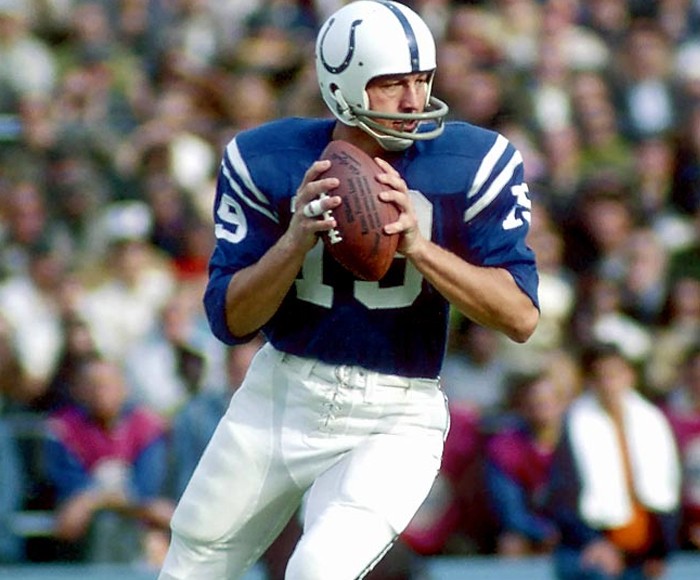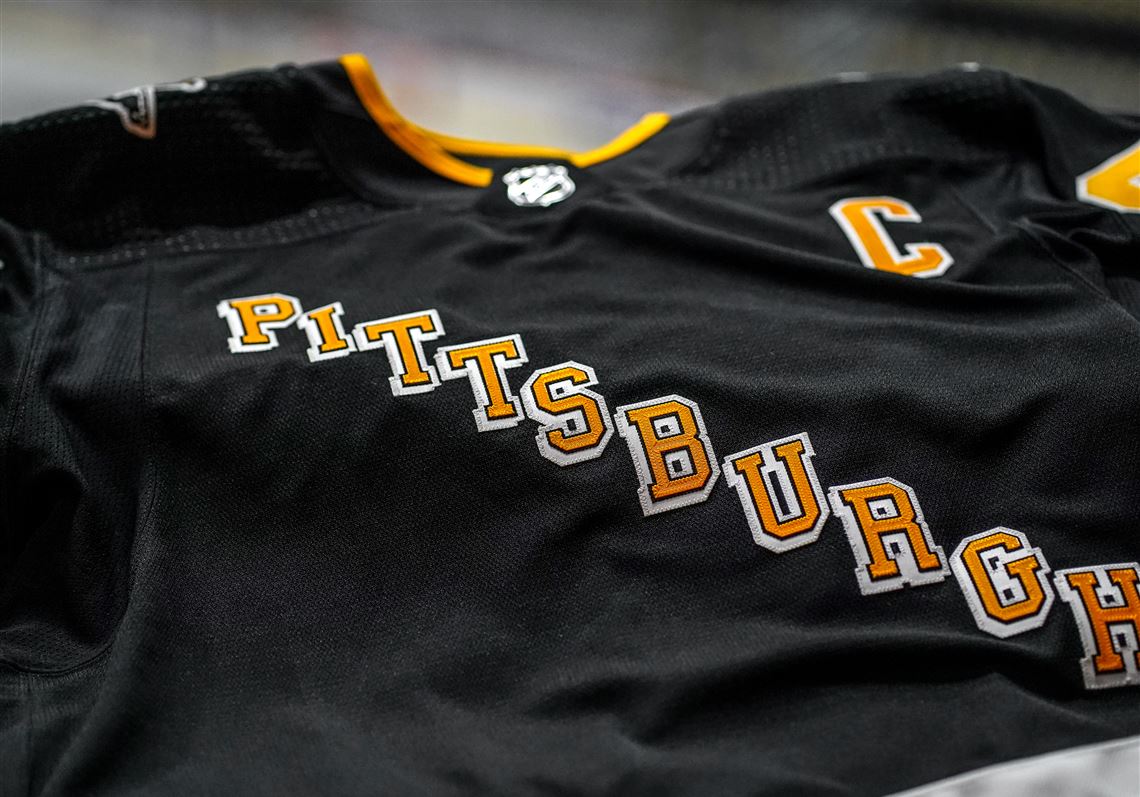Johnny Unitas went from semi-pro dirt fields to the Pro Football Hall of Fame.
Notre Dame thought Unitas too small. The Pittsburgh Steelers didn’t think he was intelligent enough. But by the time his brilliant 18-year career was over, Unitas had become the greatest quarterback in history.
Born into a working-class Pittsburgh family on this date in 1933, John Constantine Unitas was the third of four children. His father died when Johnny was five, and Helen Unitas worked two jobs while raising the family by herself.
At St. Justin, a small Catholic school in Pittsburgh’s Mount Washington neighborhood, Unitas was an undersized halfback and end. He moved to quarterback as a junior but, weighing only 145 pounds, generated little interest from colleges. Notre Dame said he was too light and Indiana passed on him as well. Pitt offered, but Unitas failed the entrance exam.
Unitas accepted a scholarship to Louisville, where he played quarterback, safety and returned kicks. He gained 40 pounds and was elected captain for his senior season, but missed most of the year with injuries.
The Steelers picked Unitas in the ninth round of the 1955 NFL draft. One of four quarterbacks on the roster, he was cut at the end of training camp without taking a preseason snap. Recently married, Unitas worked in construction to support his family. On weekends, he played for a local semi-pro team, the Bloomfield Rams, for $6 a game.
In 1956, the 6’1”, 190-pound Unitas signed with the Baltimore Colts for $7,000. In the fourth game of his rookie season, he made an inauspicious debut after replacing injured George Shaw. Unitas’ first pass was intercepted and returned for a touchdown. On his next play, the rookie quarterback botched a handoff that was recovered by the Bears.
Like golf’s Arnold Palmer, John Unitas emerged as a superstar during the advent of television. After being named league MVP in his first full season, Johnny U led the Colts to their first championship in the “Greatest Game Ever Played.” Trailing by a touchdown late in the fourth quarter of the 1958 NFL title game against the New York Giants, Unitas engineered football’s first two-minute drill. After tying the game in regulation, the third-year quarterback guided the Colts to victory in the first overtime game in history. The game, televised nationally by NBC, birthed the popularity of pro football on TV and made Unitas a household name.
The greatness of John Unitas cannot be overstated. Mr. Clutch never played indoors or on artificial turf, and under rules that greatly favored the defense. Pass rushers could head-slap offensive lineman, rendering them semi-conscious. Defenders were essentially permitted to hold. In the era of bump-and-run, it was harder for receivers to get open. Blockers were not allowed to extend their arms, making pass protection more difficult.
Unitas established every important passing record in an era before the NFL became a throw-happy league. Sammy Baugh held the NFL all-time passing record for 19 years. Slingin’ Sammy retired in 1959 with just under 22,000 passing yards. His record was surpassed by Bobby Layne, then Y.A. Tittle, who established a new mark with 28,339 career yards. Unitas retired with 40,239 yards, breaking Tittle’s record by 11,900 yards – or more than six-and-three quarter miles.
Inducted into the Pro Football Hall of Fame in 1979, Unitas was the first quarterback to throw for 30 touchdowns in a season. As a rookie in 1956, he completed a touchdown pass in Week 10 against the Rams in the L.A. Coliseum. Over the next four seasons, Unitas threw at least one touchdown pass in 47 consecutive games. Long considered one of football’s unbreakable records, Johnny U’s mark stood for more than five decades. In October 2012, Drew Brees surpassed the long-standing record, ultimately extending it to 54 games.
Prior to Unitas’ arrival in the NFL, 300-yard passing games were rare. Otto Graham and Baugh – two of the four quarterbacks named to the league’s 75th Anniversary All-Time Team — each threw for 300 or more yards seven times. Tittle did it 14 times, and the great Bobby Layne threw for 300 yards or more in ten games. John Unitas passed for 300 or more yards 27 times – more than twice as many as hall-of-famer Fran Tarkenton.
Unitas retired with the most wins as a starting quarterback [118]. He left with the most 3,000-yard passing seasons and most touchdowns [290]. Mr. Clutch threw for more yards in championship games than any quarterback in history. He had the highest postseason passing percentage and most consecutive games [4] with a passer rating above 120. Unitas led the league in passing yards and touchdowns four times.
Named the greatest quarterback in history at the NFL’s 50th anniversary in 1969, Unitas played in a then-record ten Pro Bowls. A three-time Player of the Year, he led the Colts to NFL titles in 1958 and 1959, then helped them win Super Bowl V. In 2004, The Sporting News ranked Johnny U number one among the NFL’s 50 greatest quarterbacks, with Joe Montana second.
On September 11, 2002, Unitas died suddenly of a heart attack while working out in Baltimore. He was 69. To honor the greatest signal-caller in franchise history, Colts quarterback Peyton Manning asked to wear black high tops in honor of Johnny U. The NFL – short for the No Fun League – denied Manning’s request, claiming the shoes would violate the league’s uniform code. It would have been a fitting tribute to The Golden Arm.
“Icy composure under fire, fierce competitiveness and his utter disregard for his own safety.” — former Colts hall of fame receiver Raymond Berry, on what made John Unitas special.









